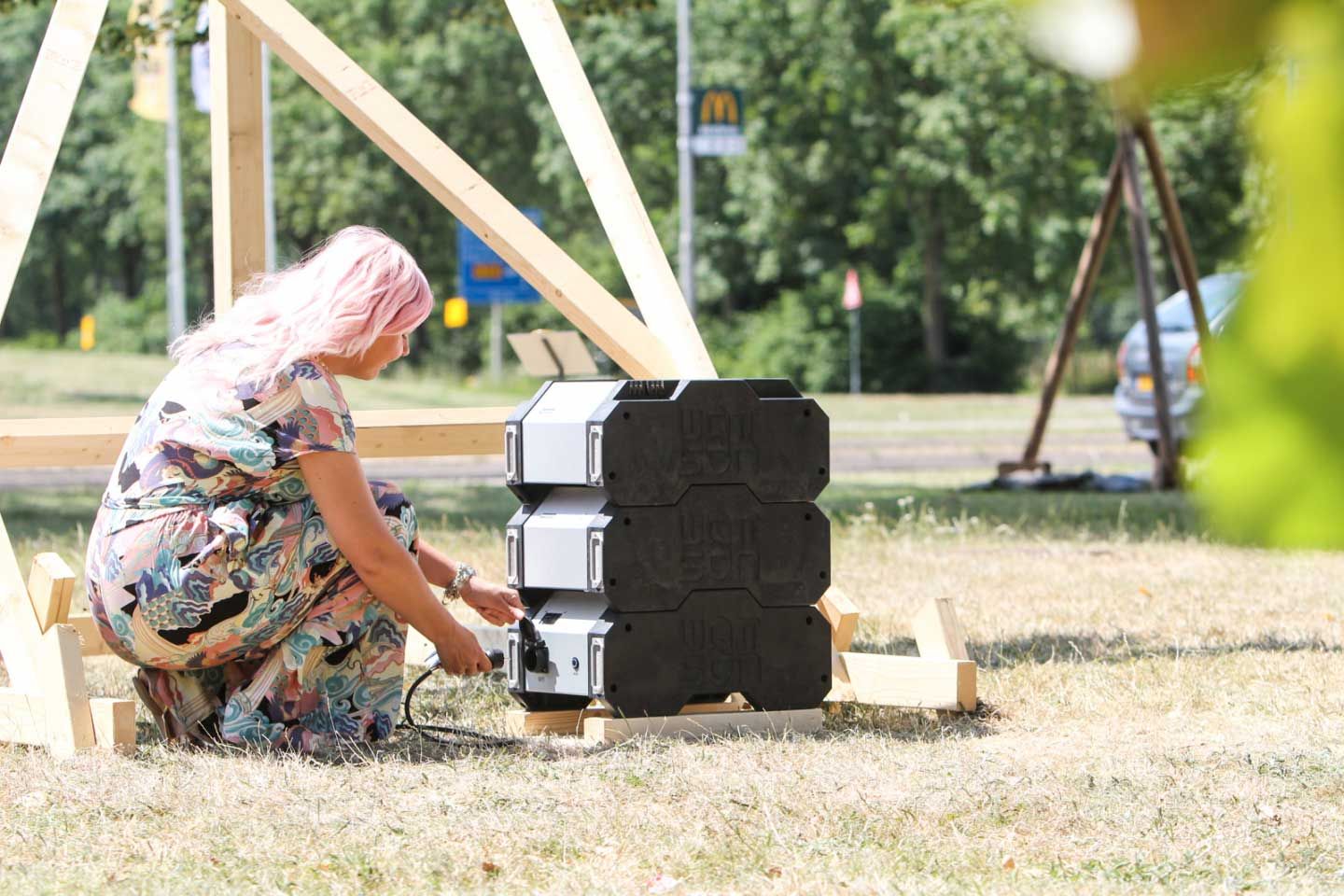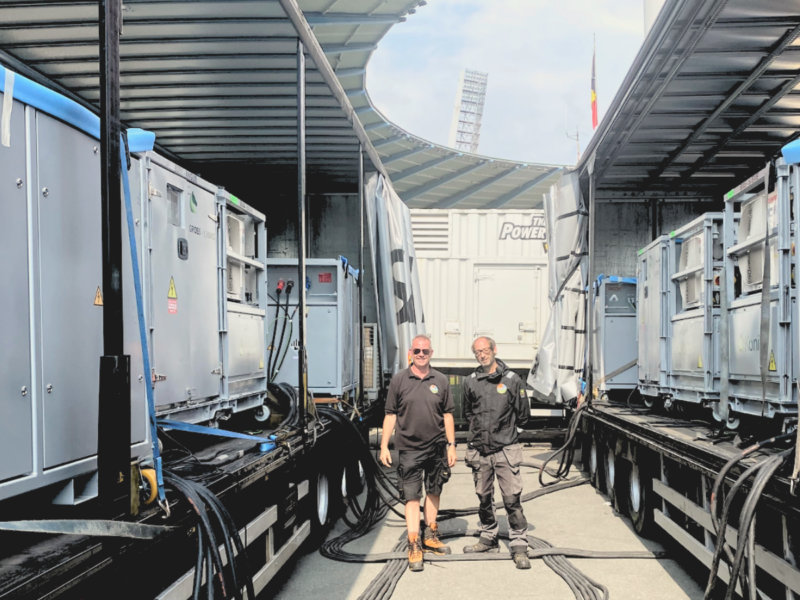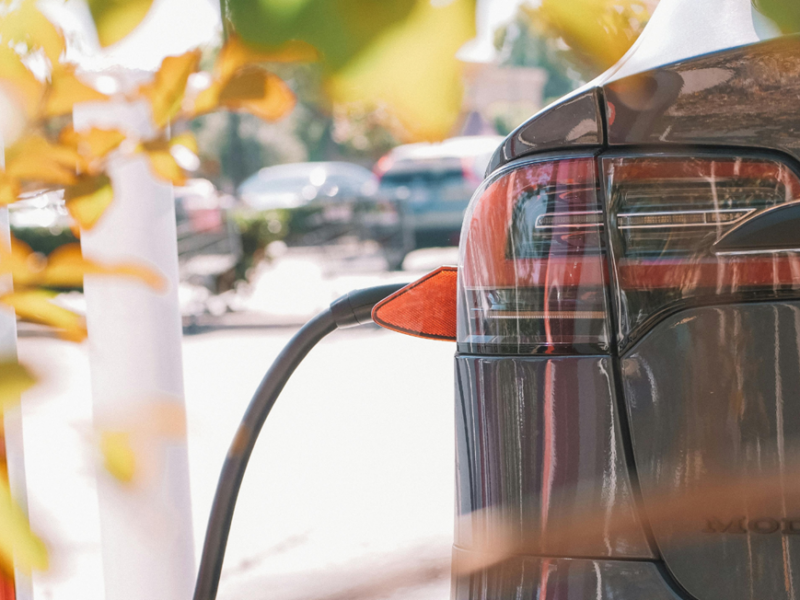
Portable Battery Solutions for Low Wattage Applications
This article was originally published on Powerful Thinking, find it here.
Tim Benson, Chair of Powerful Thinking, gives us the low down on portable battery solutions for low wattage applications, perfect for awkward locations on green field event sites where you might need to power satellite cabins, wifi masts or even hot water urns for volunteers. Tim suggests energy efficient alternatives to over-specced construction site generator and shares the six key things to keep in mind when choosing your product.
“For those of you that work on mass participation running events and festival green field sites, I’m sure you are all too familiar with difficult requests for low wattage power drops in the most awkward of locations. Whether it’s portable PAs and backline for trackside performers, satellite cabins, timing mats, wifi masts or hot water urns for volunteers; if you do not have a mains or temporary power supply nearby, then you have to provide a dedicated generator for these applications.
Currently, the event rental market offers very little in terms of power plant below 12kVA unless you are willing to risk using a 5 to 12kVA construction site generator, which I would caution against as their unstable voltage regulation can play havoc with sensitive AV and IT equipment. Another reason to avoid this scenario is that, given that the loads we are talking about here are in the region of 20 – 2000W, any generator within this range is going to be operating highly inefficiently, meaning higher levels of emissions.
A few years ago, I would often have opted for an ‘inverter suitcase’ style generator for these kinds of applications, typically something from the Honda EUi range:
Their built-in inverters outputted Sine Wave power, making them suitable for use with even the most sensitive of electronic equipment, and their eco-throttle system ensured optimum power generation vs fuel consumption. However, because these units run on unleaded petrol, many local councils have banned their use on environmental grounds, alongside growing safety concerns about people trying to refuel them whilst they are actually running. So, as we try to transition away from diesel generators, what are the alternative battery solutions available for these kinds of low power applications, and what should we look out for when choosing the right piece of kit?
One such solution, and probably my current first choice, is the WattSun NL pop up power product range (pictured). Their modular system comprises of two parts, a ‘dock’ which houses either a 1.5kW or 2kW inverter with 1.4kWhs of internal lithium battery storage, and a series of ‘packs’ which are essentially additional battery storage modules, each with 1.6kWhs of stored energy. Up to four packs can connect to each dock, providing a maximum system capacity of 2000W output with 7.8kWhs of storage. Their product form factor is remarkable and the docks and packs connect wirelessly, making them the ultimate quick deploy, plug and play solution.
Green Voltage also offers a slick solution, by way of their VOLTstack 2K portable battery system. This unit comes with a 2.4kW rated inverter and 2.5kWhs of usable energy storage. They also offer the VOLTstack 5K model, with a 4.8kW inverter and 5kWhs of usable battery capacity. Although they primarily operate in the TV, film and broadcast markets, I have seen their products used on events and the build quality is exceptional; check them out HERE.
There are a handful of other similar solutions on the market, including the Nano Series from Hybrid Power, which is available with inverters ranging from 400W – 3000W and up to 5kWhs of battery storage. MHM Group also offer some similar rental products, the first being their BATPACK 1-2, which features a 1kW inverter with 2kWhs of energy storage, and then their BATPACK 5-15 with a 5kW inverter and up to 15kWhs of stored energy.
Whichever product you choose, here’s a few key things to consider:
- Is the inverter suitable for the application’s peak load? If your baseload is just a few hundred Watts but from time to time someone is going to turn on a kettle, then the inverter must be sufficiently sized to cope with this increased load, however infrequently it might occur.
- Consider how long you will need power for to ensure you have adequate battery storage. If your load is 0.25kW for 8 hours, then you will need 2kWhs of energy storage: energy = watts (power) x hours (duty cycle). Also, check what the usable battery storage is; this is generally less than the total battery storage capacity, especially in non-lithium battery product ranges.
- Recharging: check the datasheets on recharge times and what kinds of chargers/mains adapters you might need. Some products can charge from renewables whilst in use, whereas others cannot charge and discharge at the same time.
- Some modular units are ‘hot swappable’, i.e. you can disconnect discharged battery packs and connect fresh ones whilst the unit is still outputting. Always check the spec sheets before attempting this!
- Check for safety features, especially outgoing circuit protection, socket configurations and IP rating – not all products are equal in this respect!
- Check that the ambient operating temperatures, both in terms of the units outputting and recharging, are suitable for where you are planning to use the products.
This blog was originally published on Powerful Thinking, find it here.






